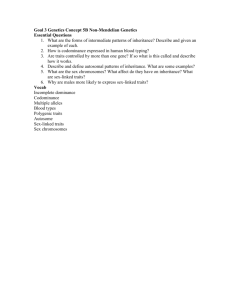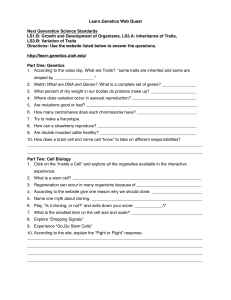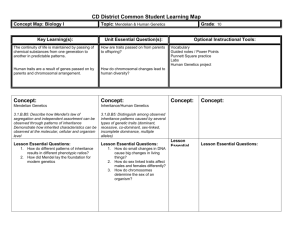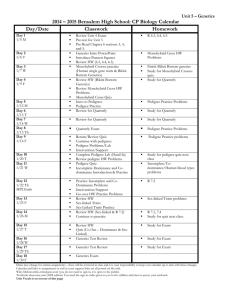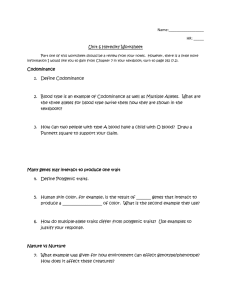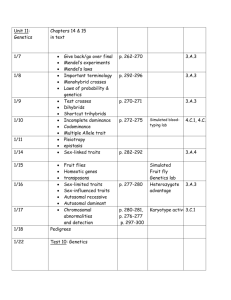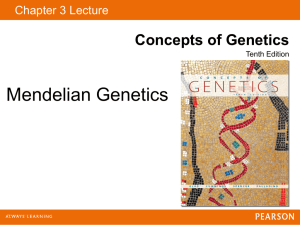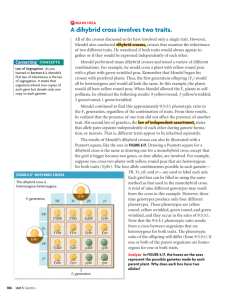new schedule
advertisement
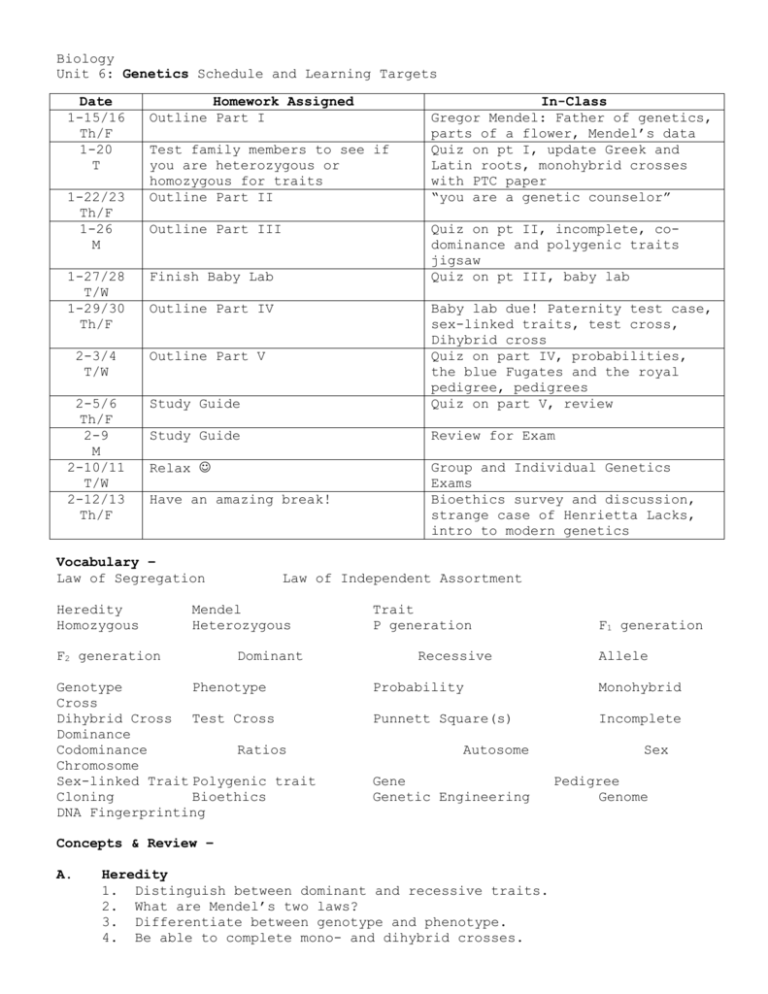
Biology Unit 6: Genetics Schedule and Learning Targets Date 1-15/16 Th/F 1-20 T 1-22/23 Th/F 1-26 M Homework Assigned Outline Part I Test family members to see if you are heterozygous or homozygous for traits Outline Part II Outline Part III 1-27/28 T/W 1-29/30 Th/F Finish Baby Lab 2-3/4 T/W Outline Part V 2-5/6 Th/F 2-9 M 2-10/11 T/W 2-12/13 Th/F In-Class Gregor Mendel: Father of genetics, parts of a flower, Mendel’s data Quiz on pt I, update Greek and Latin roots, monohybrid crosses with PTC paper “you are a genetic counselor” Quiz on pt II, incomplete, codominance and polygenic traits jigsaw Quiz on pt III, baby lab Outline Part IV Study Guide Baby lab due! Paternity test case, sex-linked traits, test cross, Dihybrid cross Quiz on part IV, probabilities, the blue Fugates and the royal pedigree, pedigrees Quiz on part V, review Study Guide Review for Exam Relax Group and Individual Genetics Exams Bioethics survey and discussion, strange case of Henrietta Lacks, intro to modern genetics Have an amazing break! Vocabulary – Law of Segregation Heredity Homozygous Law of Independent Assortment Mendel Heterozygous F2 generation Dominant Genotype Phenotype Cross Dihybrid Cross Test Cross Dominance Codominance Ratios Chromosome Sex-linked Trait Polygenic trait Cloning Bioethics DNA Fingerprinting Trait P generation Recessive Allele Probability Monohybrid Punnett Square(s) Incomplete Autosome Gene Genetic Engineering Concepts & Review – A. F1 generation Heredity 1. Distinguish between dominant and recessive traits. 2. What are Mendel’s two laws? 3. Differentiate between genotype and phenotype. 4. Be able to complete mono- and dihybrid crosses. Sex Pedigree Genome B. Human Genetics 1. Describe how genes determine traits. 2. Know how to construct and interpret a pedigree chart. (draw an example) 3. Know the inheritance patterns for: complete dominance, incomplete dominance, codominance, polygenic, sex-linked, and recessive traits. (give examples of each) C. Genetic Engineering 1. Describe DNA fingerprinting. 2. Describe the Human Genome Project. 3. Describe cloning. 4. Describe how cloning could help endangered species.
